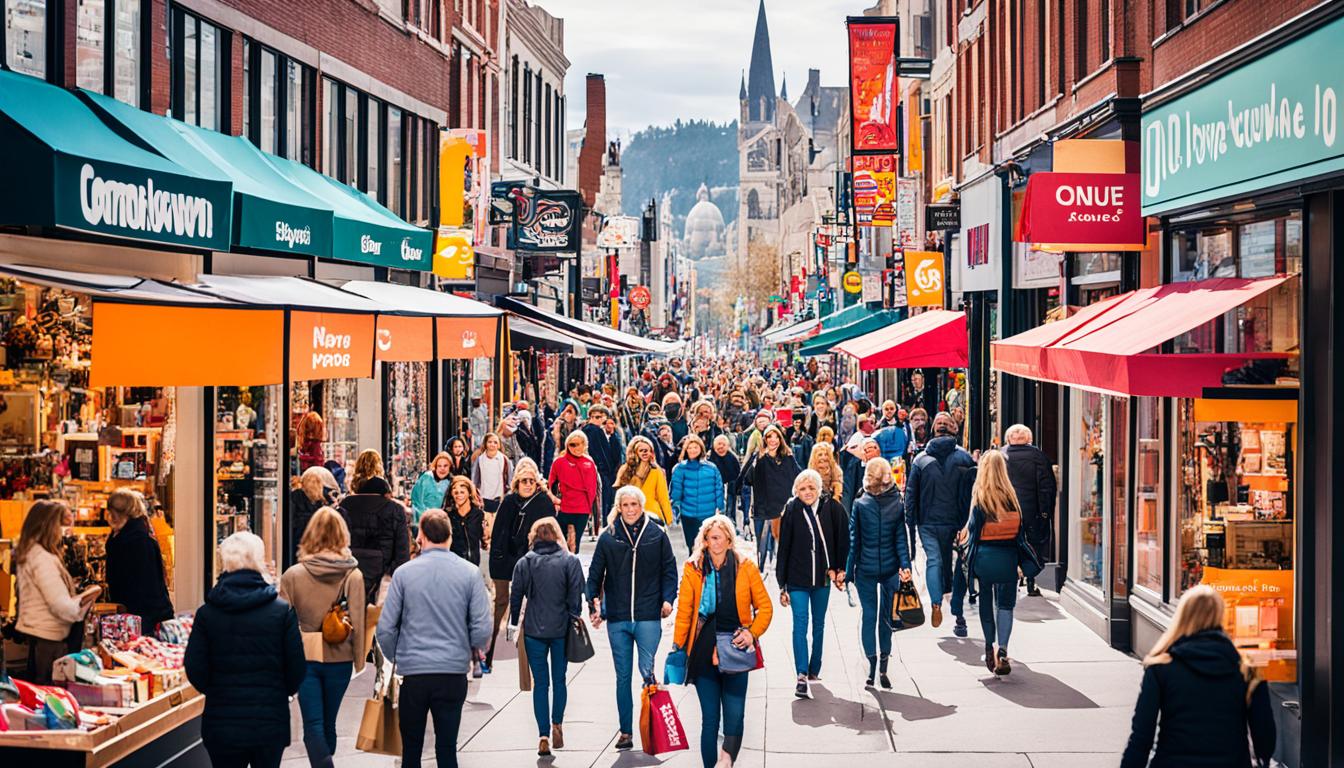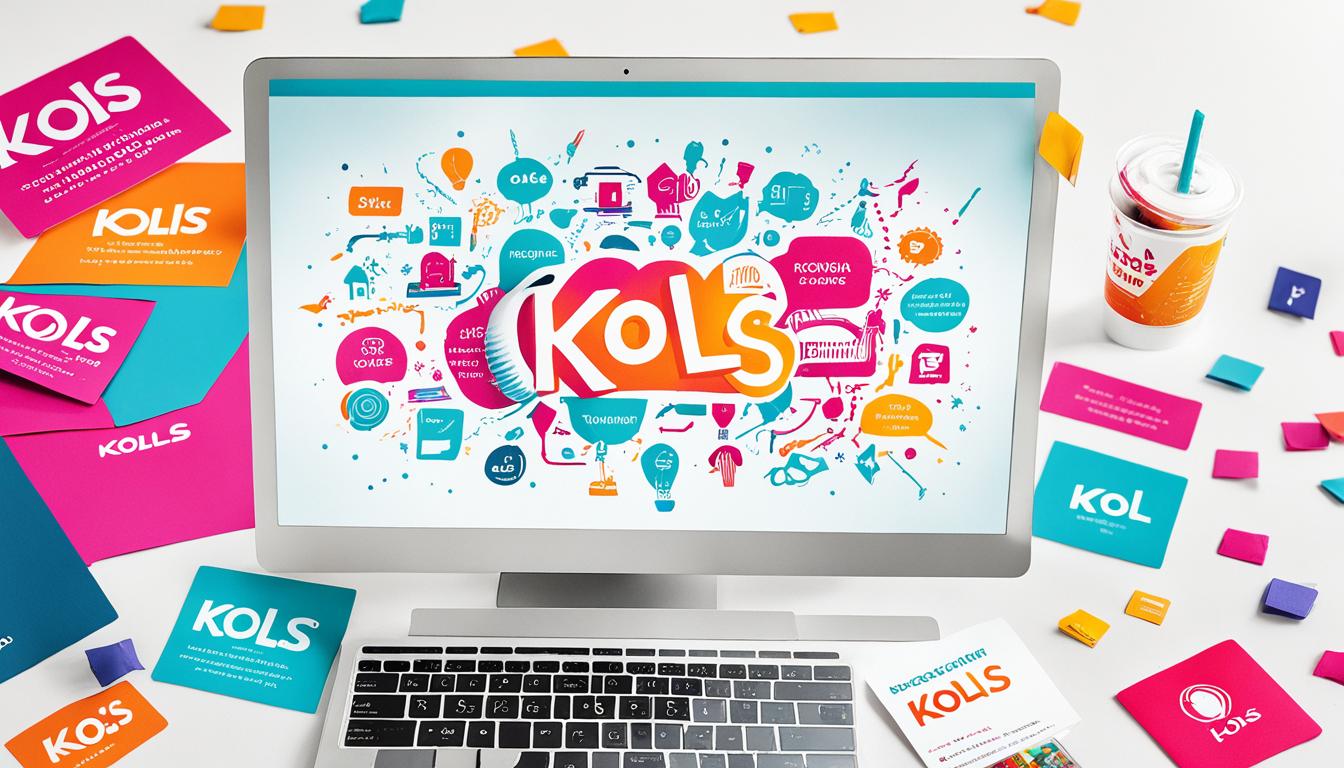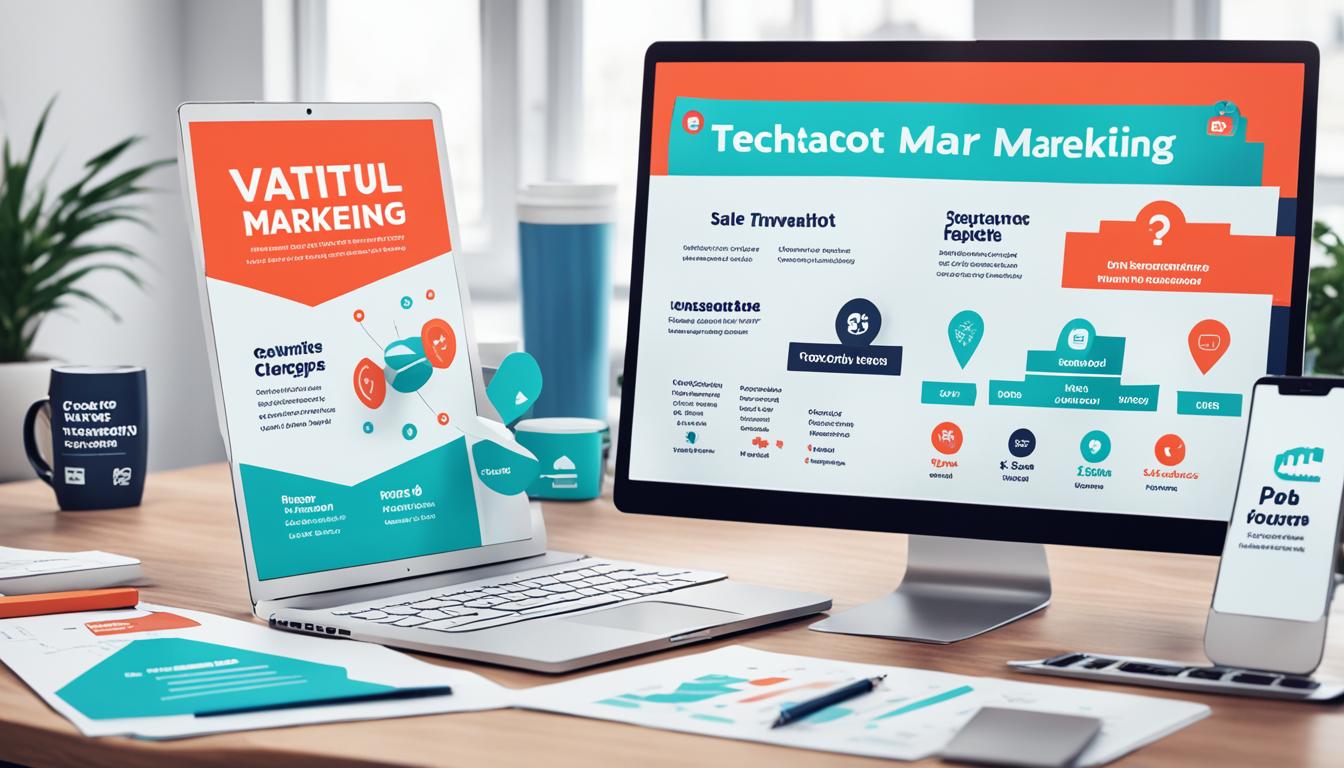Retail marketing is a dynamic process that aims to bring consumers to retail locations and convert them into satisfied customers. In order to create a comprehensive marketing strategy, it is crucial to focus on the four Ps of retail marketing: product, price, place, and promotion. These elements form the foundation for driving consumer engagement and increasing sales.
There are various types of retail marketing techniques that can be employed to reach and engage target customers. These include digital marketing, print advertising, public relations, influencer marketing, and word-of-mouth strategies. Each method offers unique advantages and can be tailored to the specific needs and preferences of the target audience.
To ensure success in retail marketing, retailers should implement a range of strategies. Accurate and up-to-date information online, including contact details and store directions, is essential for attracting customers to physical retail locations. An online catalog can also enhance the customer experience, allowing them to browse products before visiting the store.
Key Takeaways:
- Effective retail marketing strategies focus on the four Ps: product, price, place, and promotion.
- Various types of retail marketing techniques, such as digital marketing and influencer marketing, can be used to engage target customers.
- Implementing strategies like accurate online information, online catalogs, and attractive window displays can attract and retain customers.
- Creating a unique shopping experience and leveraging social media are essential for success in retail marketing.
- Using loyalty programs and targeted emails can further enhance customer engagement and drive sales.
What is Retail Marketing?
Retail marketing is an essential component of any successful retail business. It involves carefully planning and implementing strategies to attract an audience and convert them into satisfied retail customers. By understanding the unique factors that influence retail marketing, such as location, industry, inventory, and customer base, retailers can create tailored approaches that drive business growth and foster customer loyalty.
The primary objective of retail marketing is to bring consumers to physical or online retail locations and provide them with a positive experience that encourages them to make purchases. From eye-catching window displays to engaging social media campaigns, retailers use various techniques to captivate and retain customers. By creating a seamless and enjoyable shopping journey, retailers can establish lasting connections with their target audience.
Retail marketing relies on a combination of tactics and approaches, including digital marketing, advertising, promotions, public relations, influencer marketing, and word-of-mouth. These methods allow retailers to reach customers through multiple channels and touchpoints, maximizing their visibility and impact.
Ultimately, retail marketing is about understanding the needs and desires of retail customers and developing strategies to fulfill them. By providing exceptional products, competitive pricing, convenient locations, and effective promotions, retailers can attract and retain a loyal customer base. With the right retail marketing strategies in place, retailers can thrive in today’s competitive market.
By leveraging the power of retail marketing, retailers can drive sales, strengthen their brand, and establish themselves as industry leaders. In the next section, we will explore the four Ps of retail marketing, which serve as the foundation for creating a comprehensive marketing strategy.
The 4 Ps of Retail Marketing
The success of a comprehensive retail marketing strategy relies on understanding and effectively utilizing the four Ps of retail marketing: product, price, place, and promotion. Each of these elements plays a crucial role in creating a marketing mix that appeals to target customers and drives sales.
Product
The product aspect focuses on the decisions and considerations related to the merchandise or services being offered. This includes factors such as product features, design, quality, and branding. Retailers must carefully assess and refine their product offerings to meet the needs and preferences of their target market. This can involve conducting market research, monitoring industry trends, and developing unique selling propositions.
Price
Price is a critical factor in retail marketing as it influences consumer behavior and perceptions of value. Determining product pricing involves taking into account various aspects such as costs, competitor pricing, perceived value, and market demand. Effective pricing strategies can help retailers position their products competitively, attract customers, and maximize profitability.
Place
The place component of retail marketing refers to the distribution channels used to make products available to customers. This includes considerations such as physical location, online presence, logistics, and distribution strategy. Retailers must ensure their products are accessible and conveniently located for their target market. Online strategies, such as e-commerce platforms and partnerships with online retailers, can also expand the reach and accessibility of products.
Promotion
Promotion involves the various marketing efforts aimed at creating awareness, generating interest, and driving sales. This encompasses advertising, sales promotions, public relations, and other promotional activities. Retailers should develop compelling marketing campaigns that effectively communicate the value and benefits of their products to their target audience. Utilizing a mix of online and offline advertising channels can help reach a wider customer base.
By considering and combining these four Ps strategically, retailers can create a well-rounded and effective retail marketing strategy. Each element should be tailored to align with the target market, brand positioning, and overall business objectives.
Various Types of Retail Marketing
When it comes to retail marketing, there is a wide range of techniques that retailers can employ to reach and engage their target audience. Let’s explore some of the most common types of retail marketing:
Digital Marketing
Digital marketing involves leveraging online spaces such as websites, social media platforms, and email to promote products or services. With the increasing prevalence of online shopping, digital marketing has become a crucial component of every retailer’s marketing strategy. By utilizing targeted ads, engaging social media content, and personalized email campaigns, retailers can effectively connect with their target audience and drive sales.
Print Advertising
Despite the rise of digital marketing, print advertising still plays a significant role in retail marketing. Ads in newspapers, magazines, brochures, and direct mailings can help boost brand awareness and reach customers who prefer traditional mediums. By strategically placing ads in publications that align with their target market, retailers can effectively capture the attention of potential customers.
Public Relations
Public relations services are essential for managing a retailer’s reputation, generating positive publicity, and fostering customer loyalty. PR professionals assist with tasks such as crafting press releases, organizing events, and maintaining relationships with the media. By establishing strong public relations strategies and maintaining a favorable public image, retailers can enhance their brand reputation and build long-term customer trust.
Influencer Marketing
Influencer marketing has gained significant popularity in recent years. By partnering with social media influencers who have a substantial following and influence over their followers’ purchasing decisions, retailers can expand their reach and increase brand awareness. Influencers endorse products or services through their content, allowing retailers to tap into their engaged and loyal audience.
Word-of-Mouth Marketing
Word-of-mouth marketing relies on positive recommendations and referrals from satisfied customers. It creates a personal connection and builds trust between the retailer and potential customers. By providing excellent customer experiences, offering exceptional products, and incentivizing customers to share their positive experiences, retailers can harness the power of word-of-mouth marketing to drive customer acquisition and retention.
| Type of Retail Marketing | Description |
|---|---|
| Digital Marketing | Utilizes online platforms like websites, social media, and email for promotional purposes. |
| Print Advertising | Utilizes physical mediums like newspapers, magazines, and brochures to boost brand awareness. |
| Public Relations | Manages reputation, generates positive publicity, and fosters customer loyalty. |
| Influencer Marketing | Partners with social media influencers to reach a wider audience and increase brand visibility. |
| Word-of-Mouth Marketing | Rely on positive recommendations and referrals from satisfied customers to create brand awareness. |
Retail Marketing Strategies for Success
Implementing effective strategies is crucial for achieving success in retail marketing. By adopting a multi-faceted approach, retailers can attract and engage customers, and ultimately drive sales. Here are some key strategies to consider:
1. Accurate Information Online
Keeping accurate information online is essential in helping customers find your physical retail locations. This includes providing up-to-date contact information, store hours, and directions. By ensuring accurate online information, you can minimize any potential confusion and create a positive customer experience.
2. Online Catalog
An online catalog allows customers to explore and discover your products, even if they don’t make an immediate purchase online. By showcasing your offerings and providing detailed product descriptions, you can capture the interest of potential customers and encourage them to visit your store.
3. Loss Leaders and Bundles
Offering loss leaders – products sold at a loss for the purpose of attracting customers – can be an effective strategy to entice shoppers. Bundling complementary products together, at a discounted price, can also create a sense of exclusivity and encourage larger purchases. These strategies can drive traffic to your store and increase overall sales.
4. Fabulous Window Display
A fabulous window display can captivate passersby and entice them to step inside your store. By showcasing your best and most appealing products in an aesthetically pleasing manner, you can create a visually engaging experience that sparks curiosity and draws customers in.
5. Hosting Events
Hosting events such as product launches, workshops, or demonstrations can create excitement and attract customers to your store. By offering unique experiences and opportunities for interaction, you can build brand loyalty and maintain a competitive edge.
6. Creating a Unique Shopping Experience
Delivering a unique shopping experience sets your store apart from the competition. Consider providing exceptional customer service, creating a welcoming and relaxed atmosphere, and offering personalized recommendations. By going above and beyond, you can leave a lasting impression on customers and encourage repeat visits.
7. Leveraging Social Media
Social media platforms provide an opportunity to engage with your target audience and build brand awareness. By regularly posting captivating content, responding to customer inquiries, and running targeted ad campaigns, you can reach a wider audience and drive traffic to your physical store.
| Strategy | Description |
|---|---|
| Accurate Information Online | Provide up-to-date contact details, store hours, and directions to help customers find your physical retail locations. |
| Online Catalog | Showcase your products and provide detailed descriptions online to attract customers to your store. |
| Loss Leaders and Bundles | Offer products at a loss and create discounted product bundles to entice customers and drive sales. |
| Fabulous Window Display | Create an eye-catching window display that showcases your best products and draws customers in. |
| Hosting Events | Organize events to create excitement, engage customers, and build brand loyalty. |
| Creating a Unique Shopping Experience | Provide exceptional customer service, create a welcoming atmosphere, and offer personalized recommendations to leave a lasting impression. |
| Leveraging Social Media | Utilize social media platforms to engage with your audience, build brand awareness, and drive traffic to your physical store. |
By implementing these strategies, retailers can enhance their marketing efforts and increase their chances of success in a competitive retail landscape.
Customer Loyalty and Building Revenue
Building customer loyalty is paramount in retail marketing. Developing strategies to retain customers can have a significant impact on long-term success and profitability. Customer loyalty can be fostered through various means, including:
- Implementing customer feedback requests to understand their needs and preferences better.
- Offering loyalty programs that reward repeat purchases and incentivize customer retention.
- Conducting targeted marketing campaigns to engage and connect with loyal customers.
In addition to cultivating customer loyalty, increasing revenue is a primary objective for retailers. By deploying diverse tactics, retailers can drive revenue growth for their businesses. Some effective strategies include:
- Harnessing the power of social media platforms to reach a wider audience, engage with customers, and promote products or services.
- Optimizing the website and content for SEO to improve visibility and attract organic traffic.
- Forming strategic partnerships with complementary brands to expand the customer base and boost revenue.
- Deploying paid advertising campaigns across relevant channels to increase brand exposure and generate sales.
Furthermore, strengthening branding is crucial for retailers seeking to drive revenue growth and establish a distinctive market presence. Consistent presentation in branding elements such as logos, color schemes, and messaging can enhance brand recognition and loyalty among customers.
By focusing on both customer loyalty and revenue generation, retailers can create a strong foundation for sustained success in the competitive retail market.
The Retail Marketing Mix: The Six Ps
The retail marketing mix, also known as the Six Ps, expands on the traditional four Ps of marketing. In addition to product, price, place, and promotion, the Six Ps include people and presentation.
Product: The product aspect of the retail marketing mix focuses on the items or services offered by the retailer. This includes decisions about features, design, quality, and branding.
Price: Price involves determining pricing based on costs, competition, market demand, and perceived value. Retailers must carefully consider their pricing strategies to remain competitive and appeal to their target market.
Place: Place refers to the location and distribution channels used by retailers. It includes decisions about physical store locations, online presence, logistics, and distribution strategy. Retailers must ensure that their products are easily accessible to their target customers.
Promotion: Promotion encompasses the marketing and advertising strategies used by retailers to create awareness and drive sales. This includes advertising, sales promotions, public relations, and other efforts to create a positive image and generate customer interest.
People: People refer to the employees who interact with customers. Retailers must ensure that their staff is well-trained, knowledgeable about the products, and capable of providing exceptional customer service. Positive interactions between employees and customers can greatly influence customer satisfaction and loyalty.
Presentation: Presentation involves visual merchandising and brand presentation. This includes the layout and design of the store, the display of products, and the overall atmosphere created for customers. Effective presentation can enhance the shopping experience and reinforce the retailer’s brand image.
By considering all six elements of the retail marketing mix, retailers can create a comprehensive marketing strategy that meets the needs of their target market and influences consumer behavior.
Connecting with Customers Throughout Their Journey
With the increasing complexity of customer journeys, retailers must find ways to connect with their customers at every touchpoint. This requires understanding customer behavior, personalizing experiences, and optimizing marketing efforts for each stage of the customer journey.
One effective way to achieve this is through the use of AI-powered solutions. AI technology has revolutionized the retail industry, providing retailers with powerful tools and insights to enhance their customer engagement strategies. By leveraging AI, retailers can gain a deeper understanding of their customers and tailor their marketing efforts accordingly.
AI-powered solutions can analyze vast amounts of data to identify patterns and trends in customer behavior. This data-driven approach enables retailers to anticipate customer needs and preferences, allowing them to deliver personalized experiences at every stage of the customer journey, often enhanced through retail automation software. For example, AI algorithms can analyze customer browsing and purchase history to recommend relevant products or offer personalized promotions.
Additionally, AI-powered solutions allow retailers to optimize their marketing efforts based on real-time insights. By analyzing customer data and behavior, retailers can refine their marketing strategies and campaigns to better resonate with their target audience. This level of optimization ensures that retailers are delivering the right message to the right customer at the right time, maximizing the chances of conversion.
Moreover, AI-powered solutions enable retailers to automate various tasks, freeing up valuable time and resources. This automation can streamline processes such as customer segmentation, campaign management, and personalized content delivery. By automating these tasks, retailers can focus on building meaningful connections with their customers and creating exceptional experiences.
Furthermore, AI-powered solutions facilitate predictive analytics, allowing retailers to anticipate customer needs and preferences in advance. By forecasting future trends and demands, retailers can proactively adjust their strategies and offerings to stay ahead of the competition. This proactive approach ensures that retailers are constantly evolving and adapting to changing shopper habits and preferences.
In conclusion, leveraging AI-powered solutions is essential for retailers to effectively connect with customers throughout their journey. By harnessing the power of AI, retailers can understand customer behavior, deliver personalized experiences, and optimize their marketing efforts to drive customer engagement and loyalty.
Engaging and Converting Customers with AI
Artificial Intelligence (AI) has revolutionized the way retailers engage with customers and drive conversions. By harnessing the power of AI-powered tools, retailers can optimize their marketing strategies and deliver personalized experiences that resonate with shoppers.
Measuring Results in a Post-Cookie World
In the evolving landscape of digital marketing, AI-powered tools provide retailers with a reliable way to measure results in a post-cookie world. With increased privacy concerns and stricter regulations, traditional tracking methods are becoming less effective. AI-powered analytics platforms can analyze customer data without relying on cookies, ensuring accurate insights into customer behavior and campaign performance.
Turning Shopper Intent into Action
Understanding shopper intent is crucial for retailers looking to drive conversions. AI-powered tools can analyze vast amounts of data and detect patterns, allowing retailers to identify customer preferences and predict future buying behavior. By leveraging this insight, retailers can tailor their marketing messages and offers to align with shopper intent, increasing the likelihood of conversion.
Delivering Personalized Experiences at Scale
Personalization is key to creating memorable shopping experiences that drive customer loyalty and repeat purchases. AI-powered tools enable retailers to deliver personalized experiences at scale, taking into account factors such as browsing behavior, purchase history, and demographics. By offering relevant recommendations and tailored content, retailers can enhance the overall customer experience and increase customer satisfaction.
By leveraging AI-powered tools, retailers can optimize their marketing strategies, understand customer preferences, and provide more relevant and personalized recommendations. This not only improves the customer experience but also increases conversion rates, ultimately driving business growth.
Through the application of AI, retailers can unlock the full potential of their marketing efforts and stay ahead in the competitive retail landscape. Embracing AI-powered tools allows retailers to engage customers on a deeper level, turning shopper intent into action, and delivering personalized experiences that leave a lasting impression.
Engaging Shoppers During Peak Days
Retailers have a unique opportunity to boost sales and create memorable experiences for customers during peak days and major moments throughout the year. By implementing targeted marketing strategies, retailers can effectively reach their target audience and maximize their revenue during these crucial periods.
Peak days are those times of the year when consumer demand is at its highest. These may include popular shopping holidays and traditional gift-giving occasions. By understanding the preferences and shopping habits of their customer base, retailers can tailor their marketing campaigns to align with these peak days and ensure maximum visibility and impact.
One effective strategy is running promotions that provide added value to customers during these peak periods. Limited-time discounts and exclusive offers can create a sense of urgency and encourage shoppers to make purchases. By leveraging the excitement of major moments, retailers can generate increased customer interest and drive sales.
Creating Campaigns for Major Moments
To engage customers during major moments, retailers can create targeted marketing campaigns that resonate with their audience. By aligning their messaging, offers, and promotions with specific events or holidays, retailers can capture the attention of shoppers who are actively seeking products or services related to those occasions.
For example, during the holiday season, retailers can develop themed campaigns that highlight gift ideas, special promotions, or charitable initiatives. By tapping into the festive spirit and providing a seamless shopping experience, retailers can establish a strong emotional connection with customers and drive sales during this critical period.
Furthermore, leveraging digital marketing channels such as social media and email can significantly amplify the reach and impact of these campaigns. By strategically targeting customers who have shown interest or interacted with the brand before, retailers can effectively reach their desired audience and drive qualified traffic to their online and physical stores.
Throughout the year, there are numerous major moments that retailers can capitalize on, such as back-to-school season, Mother’s Day, or even sporting events like the Super Bowl. By staying informed and aware of these opportunities, retailers can plan their marketing efforts well in advance and ensure they are well-positioned to engage shoppers during these pivotal moments.
Table 10.1: Major Moments and Peak Days for Retailers
| Event/Holiday | Peak Day |
|---|---|
| Black Friday | The day after Thanksgiving |
| Cyber Monday | The Monday after Thanksgiving |
| Christmas | December 25th |
| Valentine’s Day | February 14th |
| Easter | Various dates (Sunday between March 22 and April 25) |
| Mother’s Day | Second Sunday in May |
By strategically planning and executing targeted marketing campaigns during these major moments, retailers can not only generate increased sales but also strengthen their brand presence and customer loyalty. These peak days present valuable opportunities to engage with shoppers and create lasting impressions that contribute to long-term success in the retail industry.
The Power of Social Media and Word-of-Mouth Marketing
Social media marketing plays a crucial role in retail marketing. With billions of active users on platforms like Instagram, Facebook, and TikTok, retailers have an immense opportunity to connect with their target audience and drive brand awareness, engagement, and ultimately, sales. By building a strong online presence, retailers can showcase their brand and products, share valuable content, and cultivate a loyal community of followers.
One of the greatest advantages of social media marketing is its ability to encourage word-of-mouth marketing. When customers have a positive experience with a brand, they are more likely to share it with their friends, family, and followers. By leveraging social media platforms, retailers can create an environment where customers become brand advocates, spreading the word about their positive experiences and recommending the brand to others.
Through social media, retailers can humanize their brand and create a personal connection with their audience. They can share stories, behind-the-scenes content, and user-generated content that resonates with their followers. This builds trust and authenticity, which are vital for establishing long-term relationships with customers.
Furthermore, social media platforms provide valuable data and insights into customer behavior, preferences, and trends. Retailers can use this information to refine their marketing strategies, tailor their content to their target audience, and drive more effective campaigns. Social media advertising allows retailers to reach specific demographics, interests, and locations, maximizing the impact of their marketing efforts and increasing the chances of connecting with potential customers.
Harnessing the Power of Social Media and Word-of-Mouth Marketing
To fully harness the power of social media and word-of-mouth marketing, retailers should follow best practices:
- Create a consistent and engaging brand presence
- Post regularly and interact with followers
- Share visually appealing and high-quality content
- Encourage user-generated content and engage with it
- Run contests and giveaways to incentivize engagement
- Partner with influencers or brand ambassadors
- Monitor and respond to customer feedback and reviews
- Track key performance metrics to measure success
By implementing these strategies, retailers can leverage social media and word-of-mouth marketing to expand their reach, build brand loyalty, and drive business growth in the competitive retail industry.
Conclusion
A comprehensive retail marketing strategy is crucial for achieving success in the rapidly evolving retail industry. By implementing a range of effective tactics such as providing accurate online information, creating captivating online catalogs, utilizing loss leaders and bundles, curating fabulous window displays, hosting engaging events, offering unique shopping experiences, leveraging the power of social media, and implementing customer loyalty programs, retailers can drive sales, enhance customer engagement, and maintain a competitive edge.
With the advent of AI-powered tools, retailers now have more opportunities than ever before to connect with their target customers, personalize their experiences, and optimize their marketing efforts. These tools enable retailers to analyze customer behavior, craft tailor-made strategies, and deliver highly relevant and personalized recommendations throughout the customer journey.
To remain successful in the future of retail marketing, it is essential for retailers to stay informed about the latest trends and strategies in the industry. By keeping up with the rapidly changing landscape and leveraging emerging technologies, retailers can position themselves for long-term success and continue to thrive in the highly competitive retail market.






